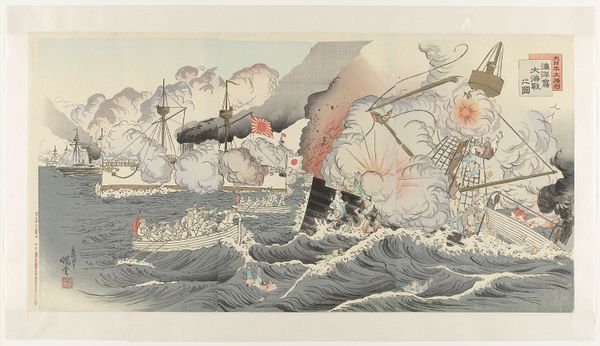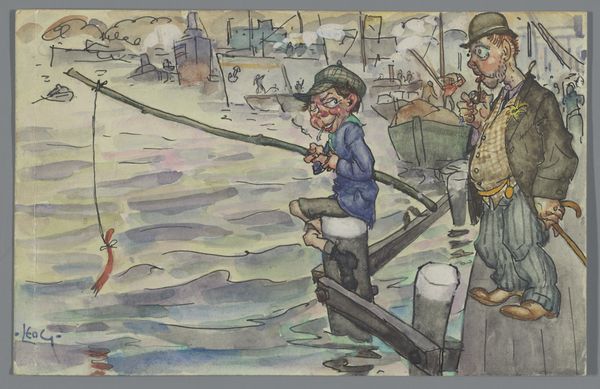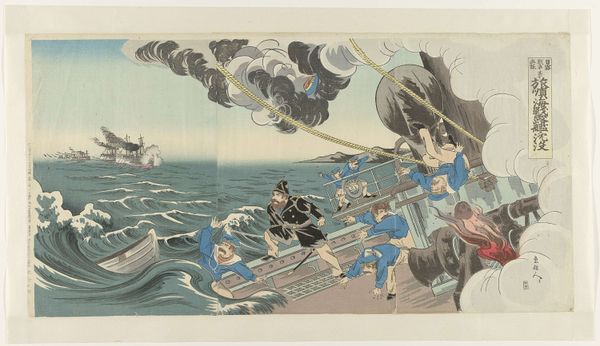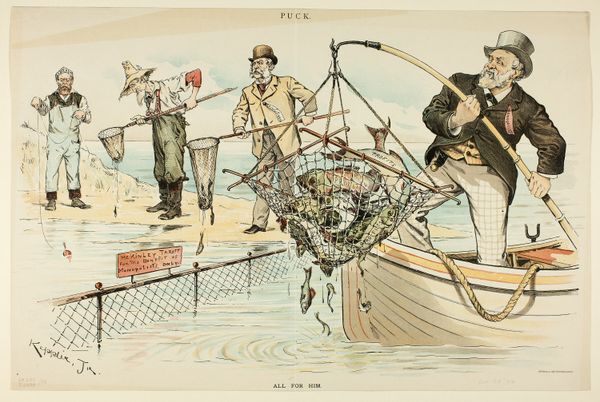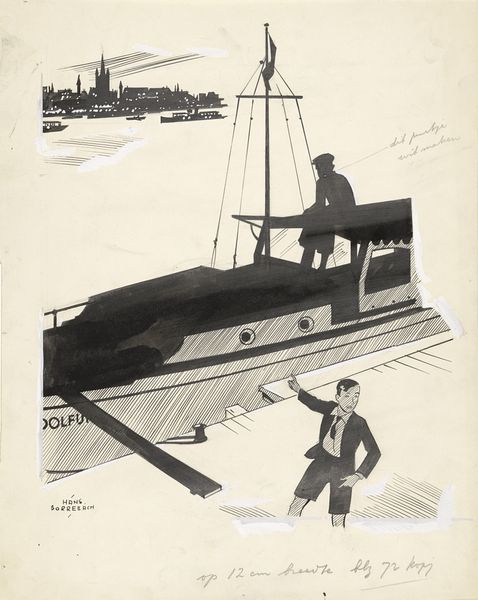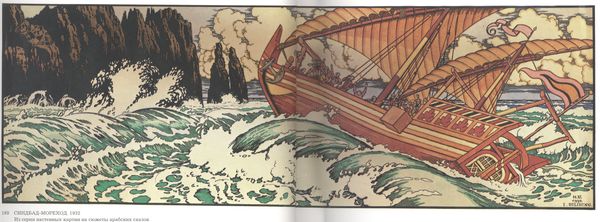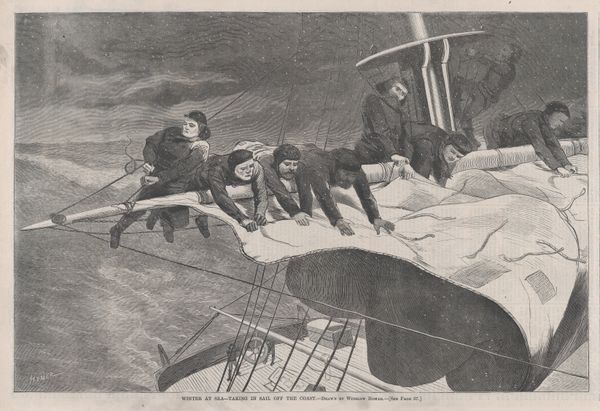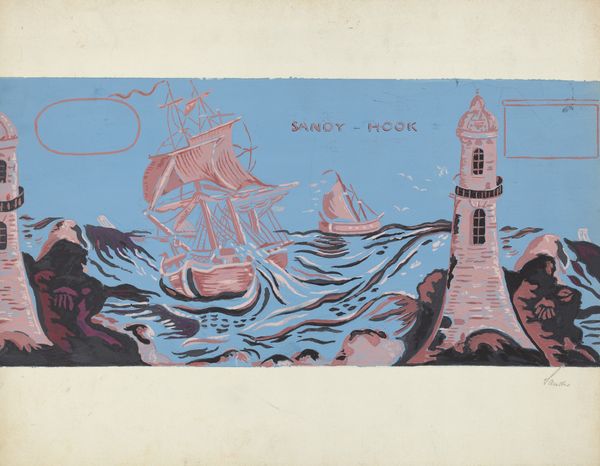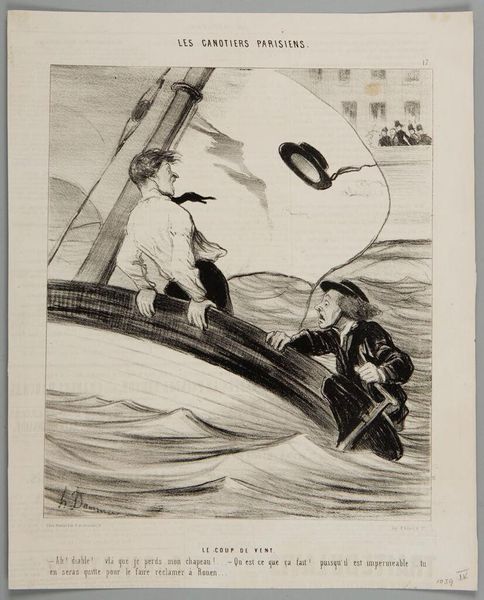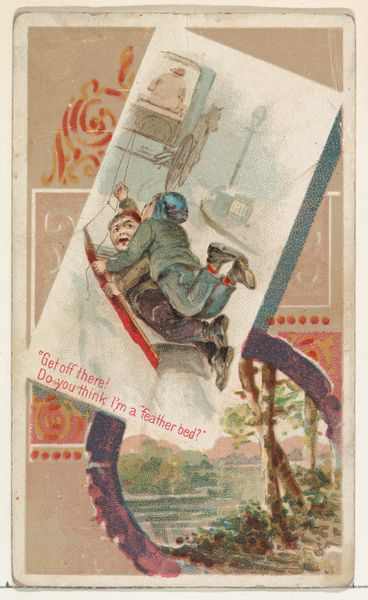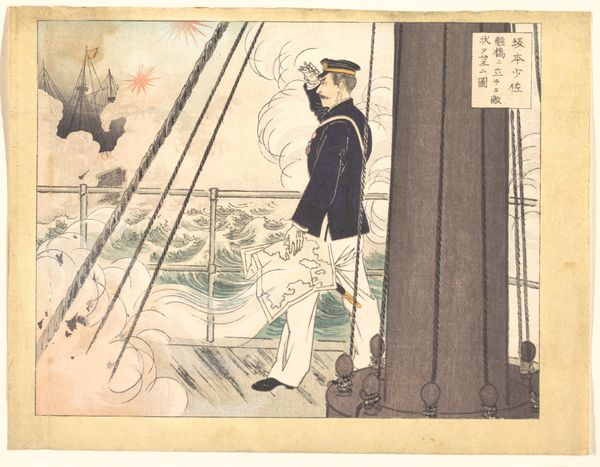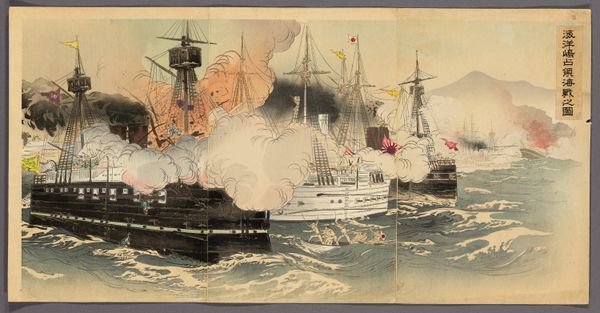
Third Illustration of the Great Victory of Our Forces on the Yellow Sea (Kokai ni okeru wagagun no taisho, dai san zu) 1894
0:00
0:00
Copyright: Public Domain
Curator: Looking at this print, I'm struck by the stark geometry amid the chaos—the sharp angles of the ship contrasting with the billowing smoke. What do you make of it? Editor: I am immediately drawn to the cultural memory embedded within the explosions. It feels like a modern representation of hellmouth iconography but set against a seascape—destruction as divine judgment. Curator: This is Kobayashi Kiyochika’s "Third Illustration of the Great Victory of Our Forces on the Yellow Sea," created in 1894. As the title indicates, it depicts a scene from the First Sino-Japanese War. Editor: The way Kiyochika employs rising sun motifs with an unsettling violence suggests cultural meanings beyond the purely historical. Note, also, the naval officer—perhaps a symbolic hero. Curator: Note his crisp, almost detached posture which functions within the print’s broader structure. Kiyochika skillfully employs perspective. See how he uses vertical elements to frame and almost compress the distant battle? Editor: The wounded sailors, they represent pathos, and yet they don’t command our central attention as they might in Western battle painting. Are they visual metaphors, perhaps? Curator: Potentially. If we examine the ukiyo-e tradition which deeply influenced Kiyochika’s woodblock prints, then such representations were always subject to the formal rules governing color fields, perspective and representation itself. We should expect such elements. Editor: That resonates. War, here, then, is shaped by a powerful need for symbolic order even amidst violence—making those rising sun explosions a reflection of a militaristic destiny. It's chilling and rather potent. Curator: Exactly, and even in Kiyochika’s choice of color, we detect this structured intention. He gives precedence to cool tones – blues, greys, punctuated with selective bright oranges—to heighten the intensity of the explosions, drawing the viewer’s eye. Editor: Thank you. Spotlighting the formal, the thematic, and symbolic nuances gives an enriched vision and understanding. Curator: Agreed; focusing on Kiyochika’s work is, above all, a lesson in the intersection between the visual and historical—a testament to how we memorialize pivotal points in history.
Comments
No comments
Be the first to comment and join the conversation on the ultimate creative platform.
